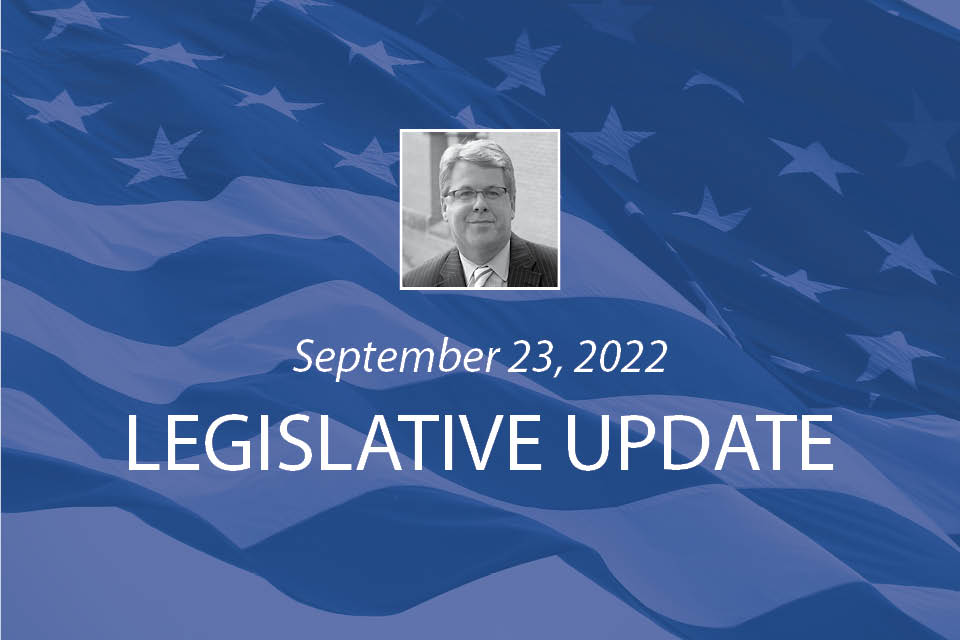Workforce Development
Earlier this month, Reps. Dave Joyce (R-OH-14) and Shontel Brown (D-OH-11) introduced the Commission on the American Workforce Act—H.R. 8784. This bipartisan bill would create a commission comprised of leading experts across industry, public services, labor, and community organizations to develop an understanding of how existing labor shortages developed and what policymakers can do to bridge the gap. Rep. Joyce had this to say about his new bill:
“One of the most common concerns I hear from small businesses in Northeast Ohio is that they have jobs available but cannot find qualified workers to fill them. As someone who has long supported policies to strengthen workforce training and close the skills gap, I’m proud to introduce this bill to help overcome the labor shortage undermining Main Streets here at home and across the country. COVID-19 created countless new challenges for our workers and their employers. But by better understanding the threats to the 21st century workforce, we can restore the legacy of the American worker and help our economy thrive once again.”
Rep. Brown added this: “To support working families and small businesses, it is vital that we study and analyze labor trends. I am confident that this legislation will help close labor gaps, demonstrate the need for affordable childcare, and define the impact of COVID-19 on our workforce. Once we know the full scope of the problems we face, we will be better equipped to make even more informed policy decisions to support our workers.”
The Commission this bill would establish is charged with:
- Bringing together a range of experts from across American industry, academia, labor, and the public and private sector to leverage their first hand experiences and knowledge about the challenges facing our country’s workforce and economy;
- Determine the extent to which COVID-19, remote work, the skills gap, demographic and family changes, federal and state policies, drug abuse, immigration, decline of American manufacturing, the lingering impacts of past recessions and economic crises, and other factors have contributed to the U.S. workforce shortage; and,
- Make actionable proposals that Congress may consider to alleviate workforce shortages.
The bill was referred to the House Education and Labor Committee.
Fish and Wildlife Service Protections for Tricolored Bat
On September 13, the U.S. Fish and Wildlife Service (USFWS) proposed Endangered Species Act protections for the tricolored bat. This bat, like the Northern Longeared Bat, has been suffering serious population declines due to a condition known as White Nose Syndrome (WNS). This syndrome, which is brought on by a fungus, harms bats by increasing the amount of energy they expend during winter hibernation. Without sufficient energy supply rationing during their months without eating, affected bats usually die.
The USFWS is proposing to list the bat as an endangered species, which will likely impose a host of new forest management restrictions on both private and federal forestland. The proposal follows the March 2022 announcement of a similar finding for the northern long-eared bat, which the Service recommended should be reclassified from threatened to endangered status, primarily due to white-nose syndrome. The tricolored bat has a wide range that includes 39 states and the District of Columbia. The agency in the proposed rule recognizes that the WNS is the primary cause of population decline for the species but also claim that the loss of forest habitat through temporary removals may impact the bats in the future.
The issue for the entire lumber supply chain is the potential severity of forestry restrictions that may result from this listing. The states that have acted in anticipation of this action and crafted Habitat Conservation Plans or HCPs, which are mainly the Lakes States, will be in good shape. However, the remaining states in the bats’ range may be looking at federally imposed forest management restrictions between the months of April and October. The comment period for the proposed rule ends on November 14, 2022. The USFWS will have an informational virtual meeting on October 12.




